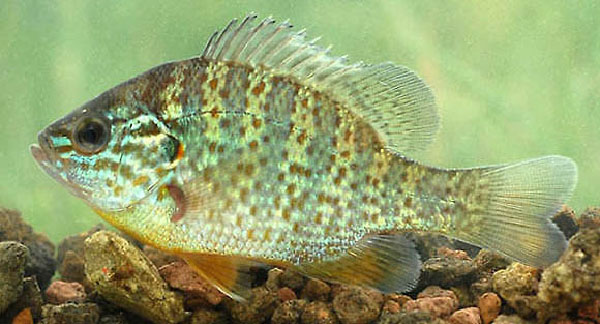Types of scales
A. Placoid scales:
- Placoid scales, also called dermal denticles, are similar to teeth in that they are made of dentine covered by enamel.
- In structure, a placoid scale resembles a tooth.
- The spine has an external covering of enamel like hard transparent material called vitrodentine.
- There is an aperture in center of the basal plate which provides entrance to blood vessels and nerves.
B. Non-Placoid scales:
a) Cycloid scales:
- Cycloid scales are smooth-edged scales predominately found in lower order teleost fishes, such as salmon, carp and other soft fin rayed fish.
- Similar to ctenoid scales, they are overlapping which allow for greater flexibility in movement than other types of scales such as ganoid scales.

b) Ctenoid scales:
- Ctenoid scales are scales with comb-like edge found in higher order teleost fishes, such as perch and sunfish.
- Cteni are the tiny teeth on the posterior margin of the scale.
- Similar to cycloid scales, they are overlapping which allows for greater flexibility in movement than other types of scales such as ganoid scales.

c) Ganoid scales:
- Ganoid scales are flat, basal looking scales that cover a fish body with little overlapping.
- These scales are heavy and have an outer layer of hard inorganic, enamel like material called ganoin.
- The middle layer is cosmine containing numerous branching tubules.
- The inner most layers are thickest and are made up of lamellar bone, isopedine.
- These scales grow by the addition of new layers to lower as well as upper surface.
- They are typical of gar and bichirs.

d) Cosmoid scales:
- Cosmoid scales are similar to placoid scales and probably evolved from the fusion of placoid scales.
- They consist of two basal layers of bone, a layer of dentine-like cosmine, and an outer layer of vitrodentine.
- The inner layer is made up of bony substance called isopedine.
- The inner layer of the scale is made of lamellar bone.
- On top of this lies a layer of spongy or vascular bone and then a layer of dentine-like material called cosmine.
- The upper surface is keratin.
- The coelacanth has modified cosmoid scales that lack cosmine and are thinner than true cosmoid scales.

e) Scute cells:
- Scutes are similar to scales and serve the same function.
- Unlike the scales of lizards and snakes, which are formed from the epidermis, scutes are formed in the lower vascular layer of the skin and the epidermal element is only the top surface.